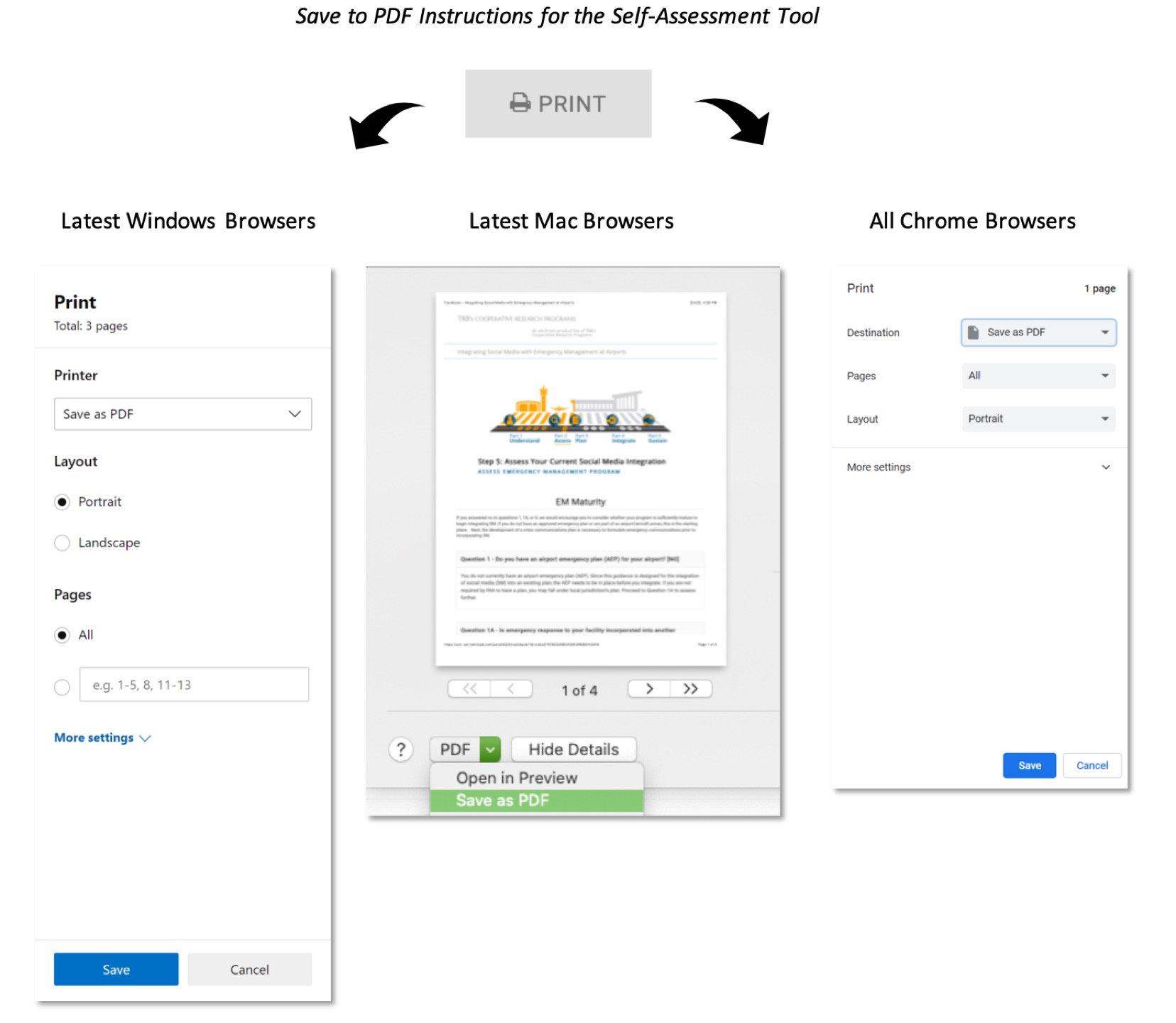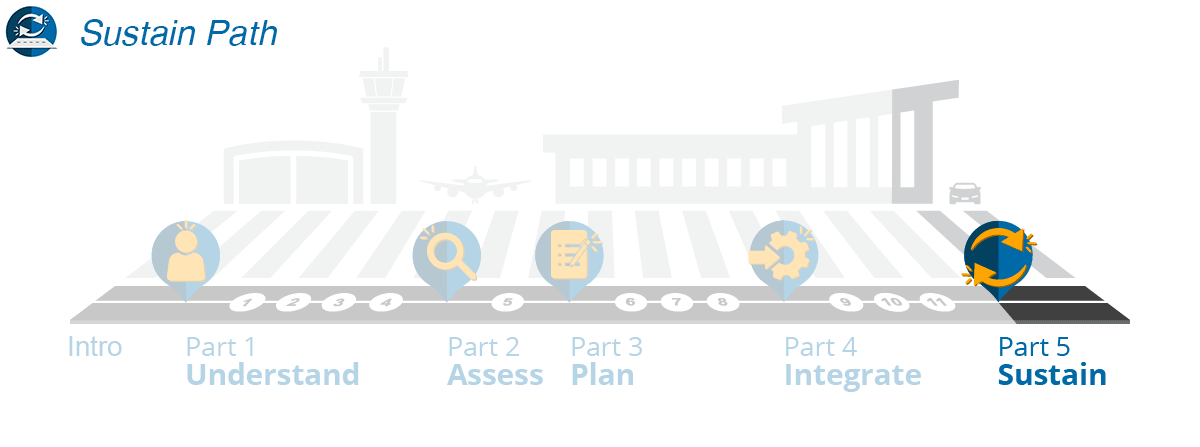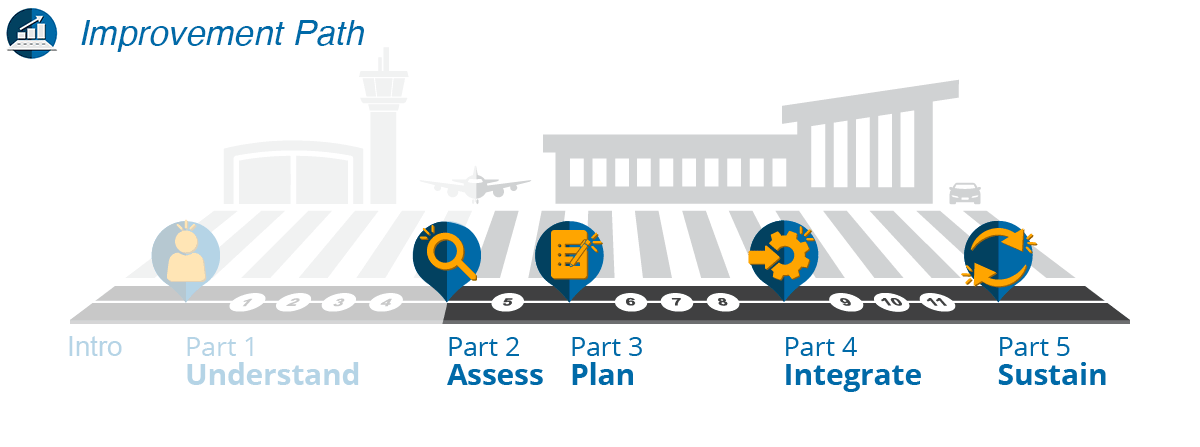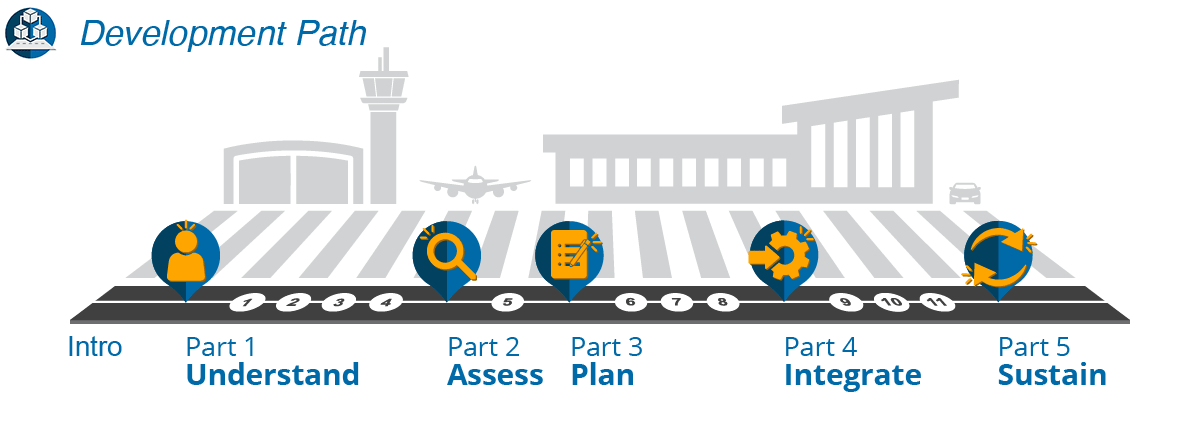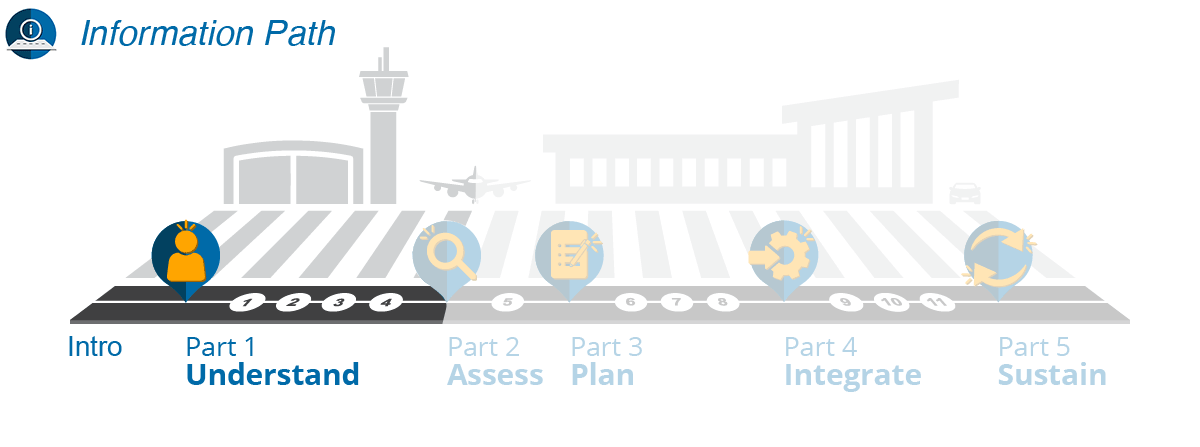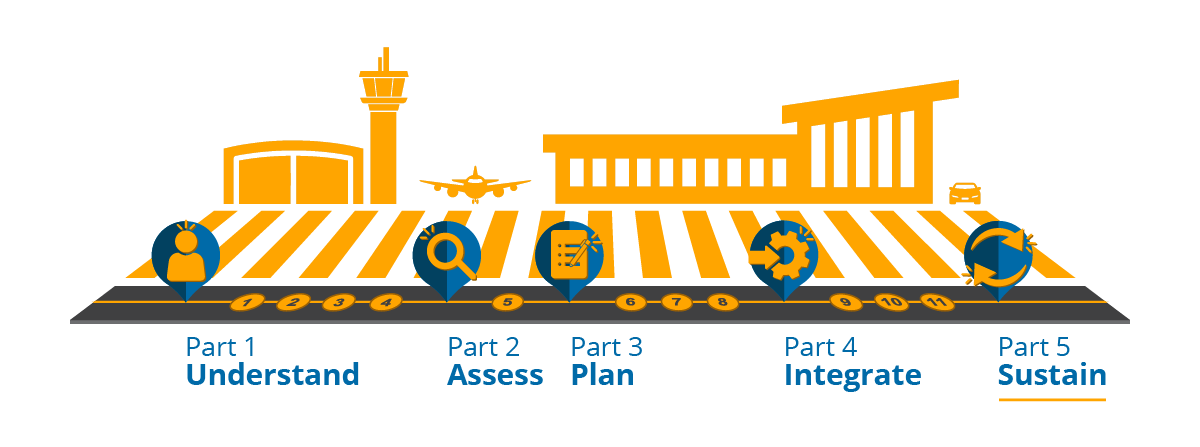
Part 5: Sustain
Adding On: Going to the Next Level of Integration
As with improving stakeholder collaboration, you should look at technology-driven innovation as a path for the extension of your program for integrating social media with emergency management (SMEM). This includes keeping up-to-date with rapidly changing digital and social transformation. For example, as you learn more and become more proficient, you should consider adding on more social media (SM) channels for listening in order to extend your program’s capabilities. You can also look for ways to raise your level of integration from basic to intermediate and eventually to complete integration.
Before you look for ways to expand your program, consider completing the Self-Assessment Tool provided as part of this WebResource. This assessment will help you highlight potential areas to add to your program. If you have completed this assessment in the past, consider periodically using the tool to reassess yourself and use the results as a starting point for future growth.
With your initial integration program up and running, consider adding greater depth to the SM management functions you have already integrated. Areas for this expansion include the following:
- Listening enhancements
- Engagement in times of crisis
- Publishing as an emergency channel
- Distributed reporting for crisis coordination
Listening Enhancements
While a basic listening strategy should include social and third-party forums, you can enhance your listening results by adding geofencing, specific influencer reporting, and baseline/trend tracking.
Add geofencing as an early indicator of a potential issue. Geofencing literally involves outlining (on a digital map) the perimeter of your airport and then listening to every SM post that originates within that boundary. Note that this will only pick up posts for which location can be determined; nonetheless, this can be a very savvy add-on for airport operators interested in spotting potential and highly localized issues before they become a crisis.
Beginning influencer tracking is a straight-forward follow-on step that simply involves noting the usernames and other attributes of people whose SM posts matter to you. As an airport, this might include a local consumer ombudsman, a city mayor or other official, known activists for accessibility or other passenger issues, and other important figures. Many social listening and engagement tools/platforms allow preloading of selected social handles so that you can prioritize inbound posts from these individuals. Even in cases where the SM channel does not allow preloading, you can still identify and prioritize these influencers through a combination of process and engagement/reporting agent training for automated recognition after an initial post.
Reassess your baseline and trend tracking to enhance your ability to spot an abnormal rise in SM traffic. Take the time to establish new baselines and then, as your program and capabilities evolve, use these baselines to create alerts (a common feature in more advanced listening and engagement tools) when traffic levels rise above normal levels.
As you consider higher-performance tools, be sure to discuss each of these with your selected SM tools vendors.
Engagement in Times of Crisis
If your program only involves listening, consider adding engagement with customers and stakeholders. Engagement can help you handle the seemingly smaller incidents such as gate altercations, local carrier problems, or other similar issues. Left untouched, these incidents can result in a crisis that escalates and drives SM conversation levels to a saturation point that effectively blocks your response team from handling any other issues.
To be sure, engagement is typically not the starting point for airports who are just starting out with SM; the recommended starting point is listening, followed with the development of an engagement strategy. Therefore, consider engagement an expansion rather than an initial planning step. This expansion includes eventualities such as “Who do you respond to?” and “Do you intervene on carrier issues such as wheelchair availability or videos of improper baggage handling that impact your airport?” Take the time to listen first. Based on that, develop an effective engagement policy.
Once you have defined your engagement strategy, develop an implementation plan to ensure it is properly managed and measured. This may require a filling new role within your emergency response team or simply updating your airport’s communications policy. Take the time to review and update your plans and roles and responsibilities to facilitate this function.
Publishing as an Emergency Channel
In addition to one-on-one engagement, the use of broad-market publishing tools is an essential element of crisis management. Your basic plan may include listening and reporting—for example, notifying your response team of an issue so that they can then take over, following existing policy and protocol. The next step is to adopt social publishing as a way of delivering timely updates and reports. You can handle issues such as aircraft incidents or weather events largely through publishing.
As you develop your publishing strategy for emergency response, ensure that local news agencies and influencers know which specific channels to follow for timely updates and crisis status reporting.
Distributed Reporting for Crisis Coordination
Reporting forms the backbone of your emergency response plan. In your initial (starting) plan you have no doubt included some element of reporting. But taking this further, consider the following options:
- Command Center: as you expand your reporting capabilities, consider adding a social display or read-out of inbound posts to your airport command center and incorporate this into your joint information center (JIC).
- Distributed Shared Dashboards: moving beyond the initial response team, consider providing mobile-app-based access for key real-time trend reports. This type of tool would be especially useful for the public information officer (PIO) liaison at the incident command (IC) post.
- Real-Time Alerts: building on the above, add alerting capability for automated notification when traffic levels rise above established thresholds, providing early warning of a potential crisis in the making.
